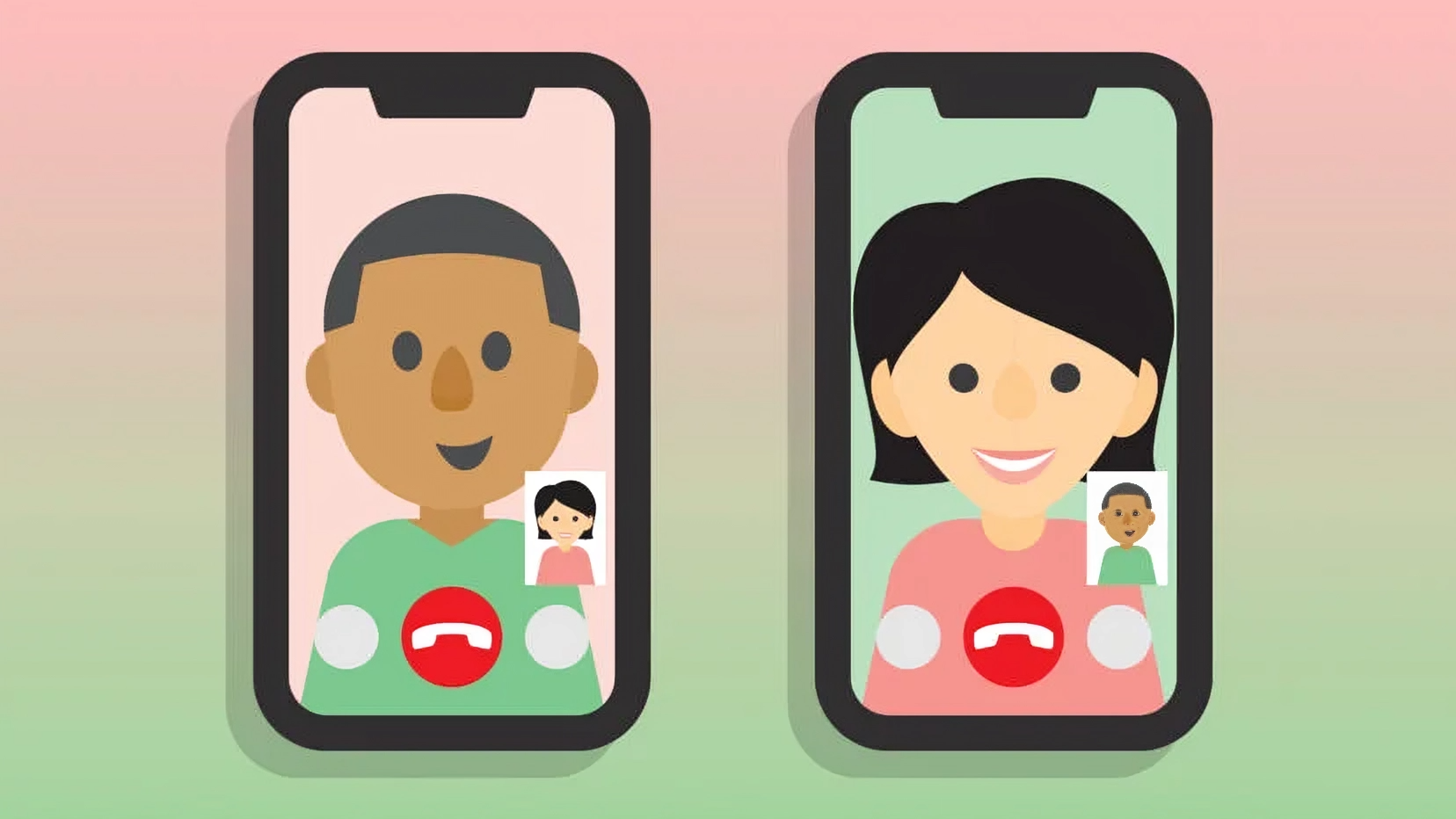Introduction
How we connect with others has really changed during the last decades. We have become what we call a ‘global village’. Even though some claim that the history of globalisation started in 1492 when Christopher Columbus stumbled across America, modern-day globalisation is divided into three phases. The first took place between 1870 and 1914, with a direct impact on international trade and finance, followed by two more between 1944 and 1971 and 1989 until today (Verde, 2017).
Globalisation was quite different back then compared to today’s paces. In fact, there was communication between civilisations and countries that normally would not be in touch, but things were much more difficult and, compared to today’s standards, quite antiquated. The great breakthrough came with the rise of video calling in the 2000s when the internet bandwidth and speed allowed not only text and audio but also real-time video transmission. Most people select video communication to enjoy a more direct call with their loved ones; however, businesses were also greatly favoured by this technology. Communication became faster, more realistic, cheaper, and more direct, which in turn affected the closing of deals and the sharing of information on demand.
The Evolution of Communication in the 19th and 20th Century
From the Telegraph to the Mobile Phone
Probably the most radical invention of the 19th century was the invention of the telegraph. From the moment it became public and available for use in May 1844 (Telegraph . Invention, History, & Facts . Britannica, 2024), for the next 100 years, it was the golden standard for communication throughout the United States. The telegraph thrived for approximately a century, but soon enough, new technological advancements such as transistors and integrated circuits emerged, which brought various microelectronic devices that improved performance at a fraction of the cost.
Most would think that telephony was the replacement of telegraphy, being invented only three years later in 1946, but the two technologies sailed along for a significant amount of time. The reason is that although many developed technologies were intended for the phone, they also found parallel applications on the telegraph, so it did not become obsolete just yet. Despite them being synchronous, the phone started to gain popularity quite later. Being a more complicated device, the first phone was devised five years later in 1854, while the first US patent won by Graham Bell took 26 more years! By 1900, there were nearly 600.000 phones, while two years later, the number reached a stunning 2.2 million devices and 5.8 million in 1910 (Elon University, n.d.)!

The Shift from Written to Audio and Video Communication
The true turning point in communications was in the 60s, with the invention of the computer, when things took their own way towards the digital era of communication. Historically speaking, the first mobile telephony service was offered to first-class train passengers between Berlin and Hamburg as early as 1926 (History of mobile phones . What was the first mobile phone?). Mobile telephony became even more popular during World War II when military vehicles started using mobile radio systems. Things were pretty limited for the next three decades, but fast forward to 1973, when the first true mobile phone was invented by Motorola. It weighed 2kg and had dimensions 23x13x4.5 cm. Quite a handful, but sadly, it was limited to voice calls.
Video calls were achieved for the first time by AT&T in the 1930s, when 2-way video conferencing was possible for the first time, even though 1-way video conferencing had already been accomplished since the 20s. The development stopped due to the great depression and World War II and was continued again in the 1950s and 1960s when AT&T introduced the market with the Picturephone® (TechTarget, n.d).
Video Communication and International Trade
How Real-Time Communication Has Transformed Global Trade
The importance of communication is beyond doubt, and this historical retrospective proves the long journey. One of the areas in which real-time communication has had a huge impact is international trade. Five or six decades ago, when a domestic company wanted to do business with a foreign one, it encountered significant limitations. Faceless and voiceless communication made trust difficult to earn. If, however, the budget allowed for it, delegations of the two businesses could meet in person, something that required weeks, if not months, of preparation, as well as a lot of money to be spent on transport and accommodation, plus absence from the actual workspace. Today, things are much easier and less costly. Emails, audio, and video calls do not exactly replace physical meetings but make intercompany relations much more personal.

The Impact on Small Businesses and National Economies
However, the true benefit is not for big companies but mostly for small businesses. Big companies have the ability to dedicate manpower and resources to business trips without the cost being too heavy; corner stores, however, struggle much more. Some people will say ‘ok, but big companies became big for a reason’. That is partially right, but let’s not forget that small companies are what drive national economies. In the United States, 99.9% of businesses are small, with their total number being 33.3 million (Main, 2022).
Cultural Globalisation and Video Communication
Connecting Cultures Through Face-to-face Video Calls
Face-to-face video calls are great not only for our personal relationships but also for businesses and closing deals. A key aspect of trading in ancient times that partially faded as a result of globalisation was knowing the ways of foreigners. Traders needed to know not only their merchandise and prices but also their foreign languages and, of course, customs. Something that makes total sense in one country does not mean that it does in another. Customs vary, and people can misunderstand situations and attitudes.
Merchants and people in older times, in general, learnt this the hard way, but today things are different. Face-to-face video calls and the surplus of information on the Internet make such things much simpler, and people can educate themselves before interacting with other civilisations.

The Role of Video in Cross-Cultural Communication and Understanding
Through such communication, people can actually communicate and understand each other’s ways. Culture consists of habits that mature through time and are inherited from one generation to the other. They are some of the unique characteristics of a civilisation. Besides, there is nothing better than experiencing something with your own eyes!
Video Communication and Economic Growth
Influence on the Participation of Developmental Countries in the Global Economy
Sometimes, we interpret the global economy as an economy among countries that have the resources to connect with others. However, this is far from the truth. A truly global economy includes both countries that can and countries that want to be a part of it. There are developing countries that can offer more at a lower price than the economically developed ones, yet they cannot because of isolation or poor infrastructure. A great initiative to boost the productivity of such countries is the United Nations Trade and Development (UNCTAD). The UN provides not only the necessary tools to developing countries to access the benefits of globalised trade but also the necessary analytics and even technical assistance (About UN Trade and Development (UNCTAD) . UNCTAD).
Another respected initiative is BRICS. Founded by Brazil, Russia, India, China, and South Africa, it is considered one of the most emerging economic collaborations. And it makes absolute sense that Russia is a key player in this, as Russia still does business in trading with all the former Soviet Union countries (CIS), despite the latter being mostly less advanced. One major difference is that BRICS countries won’t perform transactions based on the USD for their economic activities, but they will use the exchange rate of each currency of the participating countries.

Video Communication as a Driver of Economic Growth in International Markets
Earlier, we mentioned that 33.3 million businesses (99.9%) in the US are small businesses. In other countries, numbers will vary; nevertheless, small businesses are surely more than the big or international companies of every country. Being the driver of the domestic economy in all countries, imagine the potential that video communication can give to these businesses when they are reaching out to new partners, clients, or suppliers. Of course, the same can be applied to larger companies that can reach outside of their country’s borders, leading to growth in the international market!
Video Communication and Global Business Culture
How Video Conferencing Has Shaped Global Business Etiquette
With the establishment of videoconferencing as a norm in businesses, business etiquette itself took a twist. In general, online meetings have become the standard among branches of stores or companies located in different areas because they save both money and time. Especially during the COVID-19 pandemic, many companies turned to videoconferencing for the above reasons, but also because it was safe. Business meetings between partner companies also adopted this format of communication as a simpler way to reach agreements and close deals. It is without a doubt a big change, as a few years ago, not meeting someone with whom you would like to talk business in person would be considered at least rude.

Impact on Collaboration Between International Teams and Businesses
Such an adaptation knows no boundaries. Remote work continues to gain popularity, resulting in international teams consisting of people from all over the world. This doesn’t apply only to a single company but also to companies that are linked to a supply chain as members of a partnership. Due to the peculiarities of each culture, establishing collaborations can significantly improve the practices of different entities, with one learning from the other.
Challenges of Video Communication in Globalisation
Barriers Such as Internet Access in Developing Regions
Sadly, as with everything, there are barriers that need to be overcome with respect to video communication. Even within a country, the internet speed might not be as good in all regions. Considering that developing countries, with an abundance of raw materials, are trying to establish collaborations with more developed or advanced countries, the availability or speed is a serious limitation.

Cross-cultural misunderstandings in virtual environments
Apart from that, certain misunderstandings can happen in virtual environments, especially video calls where the ends are in different time zones. If, for example, a meeting is set for 13:00 between two businesses, one is located on the East Coast and the other in Spain, the local time that will be followed needs to be agreed in advance, as their time difference is 6 hours. Other things that might be misinterpreted are whether formal office attire should be followed during video meetings when working from home, how formal the attitude should be, whether someone is allowed to consume food, and the list goes on. Some companies are more on the loose side with such matters, while others are stricter.
Video Communication’s Role in Expanding Global Markets
How video technology has expanded markets for goods and services
Communication is not the only benefit of video calls. When talking about goods and services, there is describing them and seeing them. Yes, photos can be a very good representation of the real deal, but how can someone know that the photo has not been edited? Live video can lift all doubts and can certainly be beneficial for both ends. The buyer is sure that what they are getting is up to their standards, while the seller can demonstrate their products even better.
The Impact of Video on Business Scalability and Market Entry Strategies
Indeed, this would mean that markets can expand further and faster; however, with such power, there are consequences. What can be used as a tool by one company can also be used by another. Consequently, competition will be greater and not always healthy; yet, it is certain that markets will grow and become border-free. In the end, everything depends on the strategy of each company to approach and retain clients.
Conclusion
We saw the power and impact of video communication on the globalisation of different markets, how it brings people together, and how it can create a global culture. Is this good or bad? Well, each coin has two sides. On the one hand, people have come closer. On the other hand, could this mean that cultures will be mixed? Yet again, what is a culture if not flexible to changes and ever-evolving? One thing is for sure: video communication really has an impact on how people interact, which is evident by the diversity of the teams in companies and how they interact through cross-cultural communication in global business.
We have said in the past that sci-fi greatly affects life trends. Perhaps technologies that seem out of reach today will become reality in the following years. Now, we are online using our smartphones. Who knows? Maybe in the next years, we will have neurochips for that. Everyone connects with everyone, like a hive mind.
List of References
-
Ben Infotech (no date). Overcoming the Distance Barrier: How Video Conferencing Bridges the Gap in Global Business (Accessed: 9 October 2024).
-
Brandon (2020). The essentials of communication – All that you need to know as a great Leader, Firstaff Recruitment Agency: Top Recruitment Agencies Dublin., 1 March. (Accessed: 30 September 2024).
-
Britannica (2024). Telegraph - Invention, History, & Facts (Accessed: 29 September 2024).
-
Business Insights Blog (2019). How to Manage Global & International Teams: 6 Tips (Accessed: 30 September 2024).
-
Elon University (no date). 1870s – 1940s: Telephone. Imagining the Internet. (Accessed: 29 September 2024).
-
EN Inglés (2018). Cultural Differences in Etiquette, 6 March. (Accessed: 30 September 2024).
-
Main, K. (2022). Small Business Statistics Of 2024, Forbes Advisor. (Accessed: 29 September 2024).
-
McKinsey (no date). What is economic growth?
-
Payette Forward (2019). What Is Video Calling? How To Make Video Calls On iPhone, Android, & More!, 31 May. (Accessed: 30 September 2024).
-
UNCTAD (no date). About UN Trade and Development (UNCTAD). (Accessed: 30 September 2024).
-
Uswitch (no date). History of mobile phones. What was the first mobile phone? (Accessed: 29 September 2024).
-
Verde, A. (2017). Globalization: Definition and Phases, in Verde, A., Is Globalisation Doomed? Cham: Springer International Publishing, pp. 3–12.
-
WhatIs (no date). The History and Evolution of Video Conferencing (Accessed: 29 September 2024).